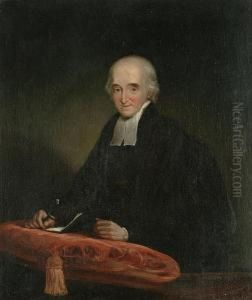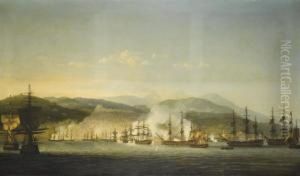Henry Parke Paintings
Henry Parke was a British artist and sculptor born in 1790. He is not to be confused with Henry Parkes, a prominent Australian politician of a later period. Henry Parke's life and career were relatively short, as he died at the age of 45 in 1835. His artistic output, therefore, is limited when compared to some of his contemporaries, and as a result, he may not be as well-known outside of specific art historical circles.
Parke was a student of the famous neoclassical sculptor John Flaxman, who was a leading figure in British sculpture during the late 18th and early 19th centuries. Under Flaxman's guidance, Parke developed his skills and was able to establish his own reputation as a skilled sculptor. He worked primarily in the neoclassical style, which was characterized by an emphasis on simplicity, symmetry, and subjects drawn from classical antiquity. This style was particularly popular during Parke's lifetime and was associated with the ideals of the Enlightenment.
Despite his premature death, Henry Parke managed to produce a body of work that reflected the aesthetic values of his time. He was known for his marble sculptures, which often depicted mythological figures and scenes. His works were exhibited at the prestigious Royal Academy in London, where they were generally well received by critics and the public alike. However, the specific details of his individual works and their impact on the art world are less documented than those of his master Flaxman or his contemporaries such as Sir Francis Chantrey.
The legacy of Henry Parke, while not as prominent as that of some other artists of the period, is still of interest to art historians who study neoclassical sculpture and the artistic trends of the early 19th century in Britain. His contributions to the field, though perhaps not extensive, represent an important facet of the artistic endeavors of the time and provide insight into the training and practices of neoclassical sculptors.


